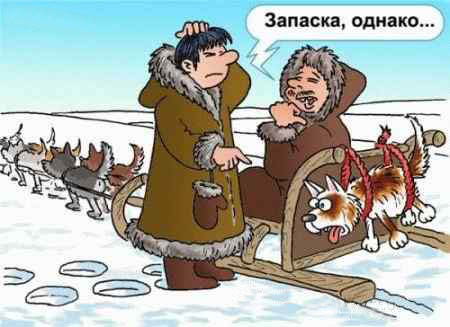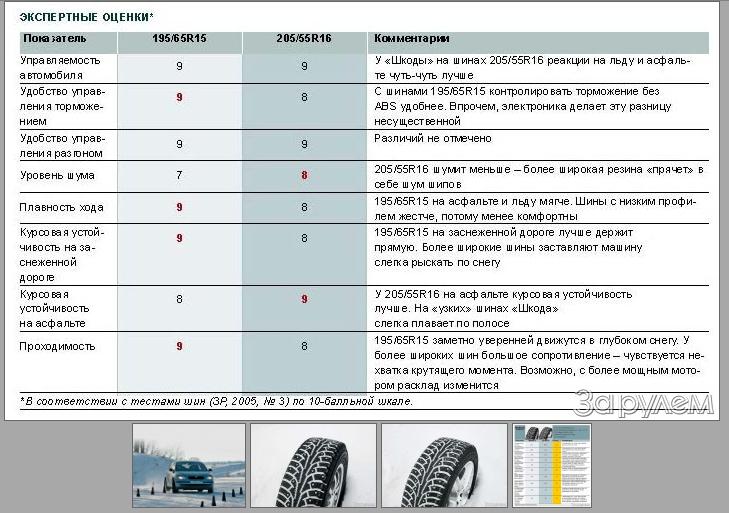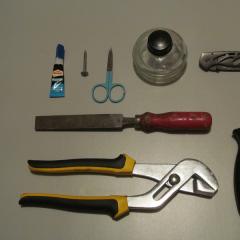The width is better.
Shiny What size of winter gum will be optimal for your car? Whenever we talk about wheels passenger cars with a large diameter, and the tires are installed in large sizes, this is the most important: even the car can be driven without difficulty on a snowy road surface. The same choice of winter tires for tires and other tasks. Wise water, who actively vikors his transport service.
V winter period, it is imperative to pay attention to the choice of the size of the rubber that will ensure the reliability of the vehicle's winter dose It’s important that wide tires work best in the snow.
However, such strongholds are baseless: wheels with
wide gum When driving, provide additional support through the increased surface area of the road surface and tire tread. This means that when you walk along the snowy road, you will be better off. Therefore width car tires This is the most important sign, which is a trace of the loss of respect in the hour of winter elections. You should also not forget about the weight of the car and the diameter of the wheels, so when choosing winter tires it is important to pay attention to their weight and internal diameter.
All information is applied to the wheel. Of course, you can get help with the selection if you quickly consult with a specialist or find a table of standard sizes on the Internet. Changing the wheel diameter can improve the carbon finish! For the rich ones ourselves the winter road has been significantly repainted.
Before speaking, a change in the diameter of the wheels improves the traction performance of the car, and the set of wheels is of a smaller diameter and costs less than the original wheels and tires. The tire profile is another important indicator that determines the quality of the tire, giving preference to any other type of winter tire. Low profile tires never go for winter driving 
.
This is largely dictated by safety precautions in the winter, since the winter weather will ensure that the car is coated on snowy or icy road surfaces. The car's "overkill" is justified from an economical point of view - the cost of repairing a car in case of an accident cannot be compared with the price of winter tires. In addition, the installation of a humi, which corresponds to the season, optimizes the attention to the main components of the machine and reduces the cost of firing. “Re-drive” your car as soon as the temperature in the car drops below 7 °C. Summer Guma spends his exploitative power
at this low temperature, which will lead to a reduction in the accumulation of heat on the surfaces and damage to the car’s tarnish. Pay attention to the need to replace all the tires. Try installing winter tires on the front wheels
rear wheels
The loss of economy can lead to unpredicted behavior of the car on the road.
How to vibrate correctly? How to determine the tire size to ensure good car coverage in winter weather? Which type of tires is better to protect the minds of a harsh snowy winter and a mild, wet climate? Which tires to buy for trips to Europe and more expensive Russian roads
Buy high-profile tires with the minimum permissible tread width, since you drive on snowy or icy roads most of the winter.
Stronger tires change the contact surface between the wheel and the surface, increasing the pressure on the surface.
This paints the car’s joints with the road and increases its keratinization in the ice deposits.
In addition, a narrow protector sinks more easily into snow and mud, reaching the hard surface.
Install tires with a higher profile height so that you can consistently protect the car from snowy road surfaces.
The high profile protects the discs from damage when they hit a stone or curb that you may not be able to get through the snow. Pivnich chi Europe It is important to communicate with the two groups due to the transmitted climatic minds of the vikoristan.
Tires of the first group are suitable for driving in harsh winters with extremely low temperatures, snow and ice.
The stench is called "smelly". Tires of another group are handy in mild winters with slight frosts. up to 210 km/year).
They will ensure that the car is coated when traveling on the highway, in snow and ice.
Choose winter tires with a V-shaped tread, since you often have to drive on roads with muddy roads, rough roads and melting snow.
- Such a little thing will ensure the drainage of water from the surface to the contact of the wheel with the surface.
- Shipi or "Velcro" Winter gum will ensure the protection of the car from the coating for the protection of the studs and lamellas. They are called tires with spikes.
Choose spikes if you often drive on the highway. The studs preserve the car's lining when frozen or covered with frozen snow. Studded tires are not suitable for Swedish driving.
Special purpose tires
The class, also called “jeeps” and “pozashlyakhoviks”, is equipped with winter manure with expanded functionality. This is largely dictated by the peculiarities of cars of this class - the increased power of the engine, rear drive
- and with a tall mass.
- What does winter gum mean for SUVs?
- Choose tires with multiple row studs or increased siping. This will ensure that the car is covered in frozen snow and ice. Tires with spikes can protect an important all-wheel drive vehicle from lateral forging, replacing the galvanized road.
- Tires with a narrow tread are not suitable for a jeep; if the contact surface is changed, the stability of the vehicle is reduced.
Deep grooves prevent contact between water, mud and melted snow, which improves the car's behavior in winter conditions. Increase the popularity of tires with a reinforced carcass and use special additives to increase the value of the rubber. Such wheels are better adjusted to greater tension and become worn out during use.
SUV cars
on the winter road. Use tires with an asymmetrical profile, which promotes the Jeep's compaction from the surface. This will protect your car's kernel coating when cornering when driving through rough roads and melting snow. You will need some countermeasures if you plan to use an SUV-class car in extreme spirits. We are talking, for example, about off-road trips for winter fishing, roads in the Gorsky regions and driving in areas where there is heavy ice.
Virologists are trying to absorb the power of the summer and winter humus in them.
Weaning the protilegal bones is difficult in practice, so it is important to sacrifice them in the winter when traveling on ice and snow. The stench wears out quickly and does not protect the car's keratin in the extreme cold. Do not vikorist the universal gum in the minds of the bitter winter. All-season tires If you are driving a car in a region where
severe frost
, snowfall and ice are rare.
This type of gum is also suitable for growing during the transition season - spring and spring. When choosing a winter tire, select the range of tire sizes that can be installed on your car. After this, it is important for you to operate the machine.
This will help you choose between “foreign” and “European” tires. Think about how you can purchase universal tires in your region..
Buy winter gum from branded tire stores to get the low-quality products.
No flower, no wand! Like tires better charge
: narrow or wide?
The price during the sales season sounds every few times, but it is not possible to give an unambiguous date, since there are no factors that can significantly influence the basic characteristics and behavior of tires in different minds. winter operation
Somehow, the magazine Behind the Wheel tested two sizes of winter tires 195/65R15 stud and 205/55R16 stud. Yak test tire taken Nokian Hakkapeliitta
5 with square carbide stud cores (model already taken out of production).
The results of the winter tire test: narrow vs wide are in front of you. Thank you for the brightness of the scan - you don’t know the best..
As long as we don’t get chilled to the skin from extinctions, we can say honestly: in the snow and ice, the tires are even close to their performance. On slushy and fluffy snow, narrow tires will work better; on heavy snow, during sharp maneuvers, the stink will be just a little bit greater. On the ice, narrow ones will only be studded during acceleration, and the axle will be galvanized more quickly during galvanization.
wide tires
If the difference in tire width was greater, for example 195/65R15 and 225/45R17 (dimensions are interchangeable), then these tests would generally be passed safely Ishe on  narrow tires , which place greater pressure on the surface of the contact, and therefore smudge more effectively the spikes and lamellas on icy and snowy surfaces. For this test, the difference between the two sizes is not fundamental at all.
narrow tires , which place greater pressure on the surface of the contact, and therefore smudge more effectively the spikes and lamellas on icy and snowy surfaces. For this test, the difference between the two sizes is not fundamental at all.
but still it is.



